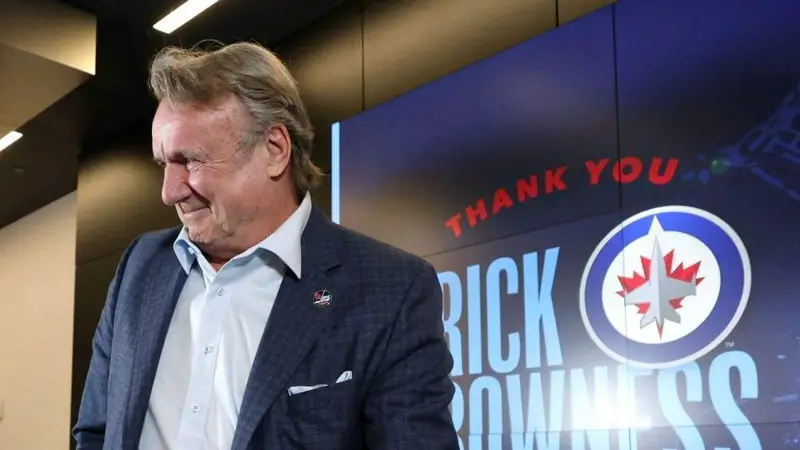In the world of professional sports, where athletic prowess and fierce competition often take center stage, the image of hockey players arriving at the arena in sharp suits stands out as a unique and intriguing tradition.
This custom, deeply ingrained in hockey culture, transcends mere fashion choice and reflects a profound respect for the game, a commitment to professionalism, and a powerful sense of team unity.
Reasons Behind the Tradition
The tradition of NHL players wearing suits on game days is rooted in a combination of respect, professionalism, and the league’s business interests. Here are the key reasons behind this longstanding practice:
Respect for the Game
The act of donning a suit signifies a reverence for the sport, its history, and the dedication it demands. It’s a visible demonstration of the players’ commitment to upholding the values of sportsmanship and fair play.
Professionalism and Image
The suit embodies the professionalism and dedication that players bring to their craft. The NHL and the NHLPA have discussed this practice since 1995, encouraging players to present themselves as polished professionals.
While not a strict requirement, this guideline reflects a shared understanding of the image they represent.
Team Unity and Culture

When a team walks into the arena, unified in their sharp attire, it creates a visual representation of their shared purpose and commitment to a common goal.
The suits become a tangible symbol of their collective identity and their dedication to achieving success together.
Improved Performance
While seemingly unrelated, the ritual of dressing in formal attire can have a psychological impact on players’ performance. It can instill a sense of focus, discipline, and confidence, helping them transition into the competitive mindset required for a game.
Historical Evolution
The tradition of NHL players wearing suits on game days has evolved over time, influenced by cultural norms, league regulations, and the sport’s identity. Here’s a detailed look at its historical evolution and significance.
Early History
Initial Attire
In the early days of hockey, players wore simple uniforms that were often practical and functional.
As the sport grew in popularity, particularly in the mid-20th century, the need for a more formal presentation emerged.
Players typically wore shirts and ties when traveling or attending games, reflecting societal expectations of professionalism and decorum prevalent at the time
Institutionalization of Dress Codes
By the late 1950s and early 1960s, teams began to adopt more standardized dress codes. The Toronto Maple Leafs, under owner Conn Smythe, enforced strict dress requirements, mandating players to wear suits during travel and at games.
This practice was not isolated to one team; many players took pride in their appearance as a sign of respect for the game and their opponents
Formalization in the NHL

Introduction of Mandatory Suits
The formal requirement for NHL players to wear suits was established in 1995 during collective bargaining negotiations between the NHL and the NHL Players’ Association (NHLPA).
This agreement aimed to promote a professional image for players and distinguish game days from practice days. The suit became a symbol of professionalism, reinforcing the league’s image as a serious sporting institution.
Cultural Significance
Wearing suits is seen as a gesture of respect towards the game itself and the opposing team, acknowledging the seriousness of competition.
This tradition fosters team unity and reflects the values that are integral to hockey culture—discipline, respect, and professionalism.
The NHL remains unique among major North American sports leagues for maintaining this dress code.
The Attire
The specific attire worn by hockey players varies, but it typically includes:
- Dress pants and jackets: A classic choice that balances formality and comfort.
- Blazers, waistcoats, and neckties: Some players opt for a more traditional look.
- Variations across regions: North American players tend towards a more business-like style, while European players often incorporate unique accessories.
Professionalism in the NHL

The NHL’s dress code plays a crucial role in creating a professional atmosphere, both on and off the ice.
- Setting the tone: The dress code establishes an expectation of professionalism from the moment players arrive at the arena.
- Projecting a professional image: Suits project a sense of class and excellence, reflecting the team’s brand and commitment to the sport.
Comparing with Other Sports
The tradition of wearing suits sets hockey apart from many other professional sports. While some leagues have relaxed dress codes, the NHL’s commitment to this practice speaks to the unique culture and history of the sport.
The debate continues as to whether this tradition will endure or evolve, but its current impact on the sport is undeniable.
Global Variations and Youth Hockey
The tradition of wearing suits extends beyond the NHL, with professional teams around the world adopting variations of the dress code.
Many youth hockey leagues also encourage formal attire, instilling values of professionalism and respect from a young age.
Benefits and Criticisms
The dress code has its proponents and critics.
Benefits:
- A professional image that reinforces team unity.
- Enhanced focus and a winning attitude.
- A show of respect for opponents and the game itself.
Criticisms:
- Stifling individual expression.
- Appearing outdated in modern times.
FAQs
Why do hockey players wear suits?
Wearing suits symbolizes respect, unity, and professionalism in hockey. It’s a tradition that emphasizes the sport’s core values.
What specific items of clothing do hockey players wear?
Players typically wear dress pants, jackets, blazers, waistcoats, and neckties.
Are NHL players required to wear suits?
Yes, NHL players must adhere to a dress code that includes wearing suits for game-day events.
Why do players wear suits before games?
It signifies respect, professionalism, and team unity.
Conclusion
The tradition of hockey players wearing suits is much more than a simple dress code. It’s a powerful symbol of the sport’s enduring values: respect for the game, commitment to professionalism, and the strength of team unity.
While the future of this tradition remains a topic of discussion, its impact on hockey culture is undeniable.





James Felix